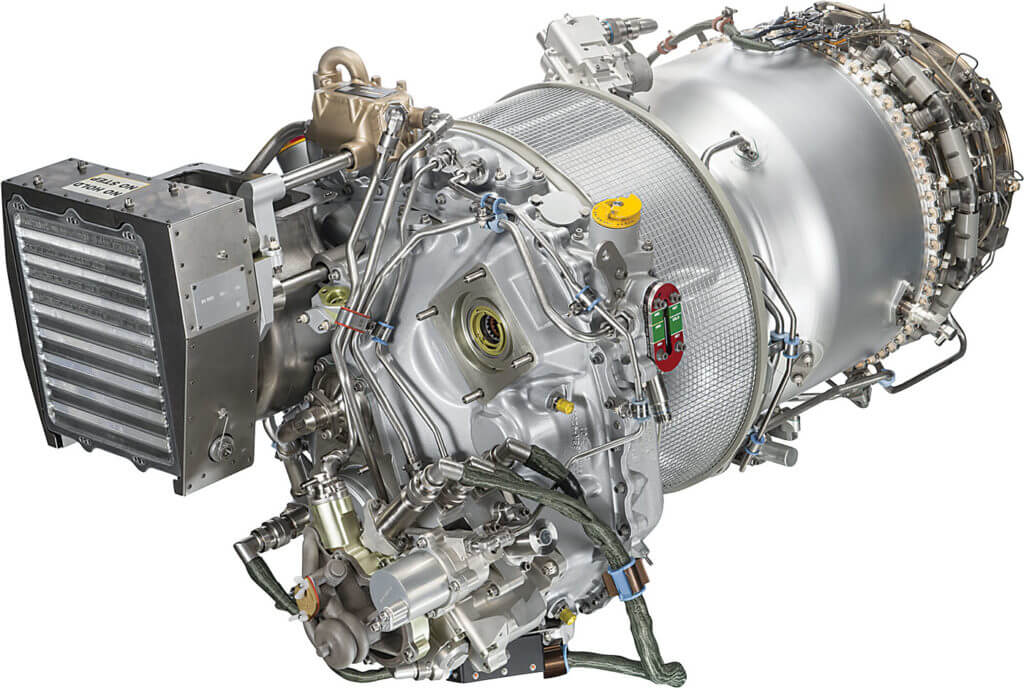Pratt & Whitney Canada (P&WC) views 2019 with cautious optimism, believing it will be a positive year for the helicopter industry with a few caveats in the form of ongoing challenges.
 In 2018, the company saw a gradual recovery in the oil and gas sector, which tends to be a bellwether for the helicopter industry overall. However, having managed nearly a decade of reduced oil and gas activity, P&WC expects the sector will retain its reduced cost structure and sharp focus on margins.
In 2018, the company saw a gradual recovery in the oil and gas sector, which tends to be a bellwether for the helicopter industry overall. However, having managed nearly a decade of reduced oil and gas activity, P&WC expects the sector will retain its reduced cost structure and sharp focus on margins.
The company also saw increased use of helicopters for missions such as wind-farm inspections, which bolstered the utility sector overall. P&WC realizes, however, that costs will be a crucial factor in determining mission sustainability. Others facing challenges in 2018 were lessors, many of whom faced financial difficulties and were obliged to re-purpose existing aircraft and give them new mission capabilities.
The common thread for these and other similar trends is the need to drive higher levels of productivity for helicopter operators in all industry segments.
“We have enthusiastically taken on the challenge of working with operators to help them keep their costs down by developing new solutions that deliver greater efficiency and increase operator competitiveness,” said P&WC’s VP of marketing and sales for helicopter engines, Nicolas Chabée.
The company’s objective is to bring new solutions to enhance the value of its customers’ engines over their lifecycle and to partner effectively with its customers’ businesses. To that end, P&WC announced several new initiatives in 2018 that it will continue to refine and build out this year, including its:
· Certified Pre-Owned engine program for its helicopter engines;
· Fleet Service Plan, a pay-per-hour maintenance program for fleets of two to five helicopters;
· ESP™ Platinum coverage for PW200 engines that includes environmental repair at overhaul;
· Tailored customer service programs for the security and defense sector; and
· Mission-ready services for VIP and head-of-state missions.
The power of the PW210
P&WC engines, in and of themselves, are a tremendous source of productivity for operators. The PW210 engine is a prime example. The most recent helicopter to enter service powered by this engine is the Leonardo AW169, which is considered an exceptional workhorse and highly competitive, based in large part to the attributes of its PW210 engines.
Factors that contribute to the engine’s high efficiency include variable inlet guide vanes (VIGVs) and a full authority digital engine control (FADEC). The VIGVs improve engine operability and maximize the aircraft’s handling performance, which means the helicopter can complete its mission more quickly and with greater ease. The FADEC incorporates an electronic engine control (EEC), fuel control unit, data collection unit and multiple sensors for main oil pressure, fuel pressure and more–all working together to provide automated and electronic functionality, resulting in significantly reduced pilot workload. The health monitoring capabilities of the EEC (it monitors the health of its inputs, internal hardware functions and external driver circuits) allow operators to plan their maintenance activities better and avoid costly, unproductive downtime.
 Other PW210 engine features that empower the crew and automate otherwise manual tasks include:
Other PW210 engine features that empower the crew and automate otherwise manual tasks include:
· Automatic starting, light up, turbine temperature limiting and hung-start detection with a start-abort function if a problem is detected;
· Available limiting in all engine-operating regimes, which will prevent the engine from exceeding either a speed, torque or temperature limit;
· One-engine-inoperative pilot training mode;
· Electronics that provide the flexibility of detecting and logging faults and exceedances;
· Potential for precise creep and low-cycle-fatigue damage counting of critical components (can be done automatically because the software continuously monitors engine speed and temperature);
· In-flight, automated engine power assurance check or EPAC (this is being developed with the OEM and pilots will be able to initiate it);
· Hot section inspections determined by the engine’s condition, based on the EPAC results;
· A line maintenance kit that contains tooling to perform “on-wing” maintenance for seal replacement, oil servicing and compressor turbine wash; and
· The ability for the PW210 to serve as the helicopter’s auxiliary power unit, saving the cost and weight of a third engine.
Areas of Growth
P&WC sees significant growth potential in 2019 and beyond in several geographic markets.
Demand is burgeoning for helicopters, especially those in emergency medical services, throughout the Asia-Pacific region. The company has a significant footprint here and a large installed base.
Another area of growth is in security and defense.
“Forty-two percent of the helicopters we power are owned by governments around the world,” said Chabée. “They fly missions such as search and rescue, firefighting, transport and military. We have extensive experience in security and defense, including a long-standing relationship with the U.S. government.”
More than half of the world’s military helicopters are 20 or more years old. This means governments will be undertaking large-scale upgrade and replacement programs; some already have.
For example, in September 2018, the U.S. Air Force selected the Boeing MH-139 (modified AW139) to replace its fleet of UH-1N Hueys. As with the AW139, twin P&WC PT6C-67C engines power the MH-139.
“We have built our brand around the reliability of our helicopter engines,” said Chabée, “all of which have levels of reliability that significantly exceed industry benchmarks. They are also known for performance in demanding and varying operating environments and are ideal for training helicopters–a mission where we are regarded as the engine of choice.
“We are driven to continue to invent the future of the rotorcraft industry. We have an ongoing dialogue with our OEMs to understand the trends and technology requirements of the next generation of platforms–including on-demand mobility, hybrid engines and more efficient powerplant solutions–so that we can concentrate our R&D efforts on what will bring value to the industry. Our goal is to be the engine of choice in all the markets we serve.”









